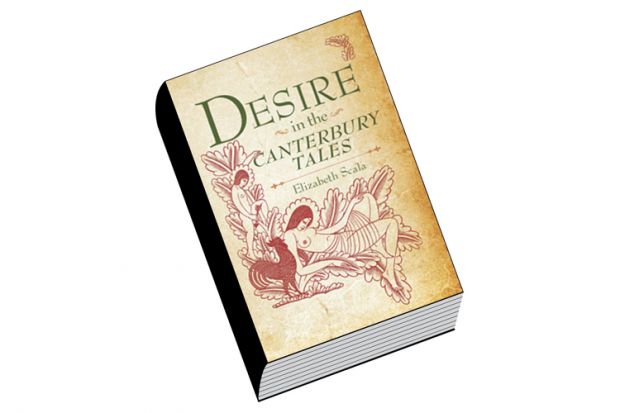Elizabeth Scala opens the conclusion to this book with the sentence: “Calling the Canterbury Tales a discourse of desire is a tricky business.” This is true in more ways than one. To begin with, her discussion rests on her treatment of just six pilgrims: the Knight, the Reeve, the Wife of Bath, the Clerk, the Second Nun and the Physician. Some attention is paid to the Miller, and passing reference is made to other tales along the way, but a thesis about the whole poem that depends on detailed analysis of such a small number of tales cannot stretch itself across the panoply of the poem’s portraits and genres. Indeed, Scala is rightly aware of Chaucer’s poetic variety, noting that the governing idea of pilgrimage “provides the meeting ground for a diverse group of figures and an occasion for divergence itself”.
The second tricky aspect of this book is its reliance on contentious assertions as though they were established principles. Scala’s account of the opening of the General Prologue is climatically wrong, insisting on “the non-nativeness of this English spring”. Rather, she proposes, Chaucer “has transplanted the gentle Mediterranean climate…in English soil”. As I sat reading her book in the last week of April, I could look out my study window at three blossoming cherry trees in a field animated by prancing newborn lambs. Quite apart from the medieval association of new life with Easter, April in England is just about as teeming as one could wish for.
Contrarily, Scala maintains that in the Miller’s Tale, John’s “mad raving about a second Flood provoke[s] more laughter” than Nicholas’ scorched bum. Unlikely, but what about the full facial fart received by the dainty Absolon that Scala does not even mention? Isn’t this the tale’s real comic climax? What is “particularly funny”, she continues, “is the way serious Christian materials repeatedly enter the story, without any strict moralizing framework”. Well yes, but what about Absolon kissing Alison’s “hole” and all the subsequent shenanigans?
These idiosyncratic readings mar an otherwise intriguing study. Scala effectively argues for the centrality of desire as a trope that holds the tales in tension against each other: “physical and erotic impulses compel their political and social dramas”. She is also astute on the discomfort generated by the religious tales (the Second Nun’s and the Physician’s among others), which “are hardest to assimilate to the poem’s more playful register”. Their “meaning is self-evident and self-evidently moral”.
A pattern emerges of reasonable and brisk literary criticism that sometimes founders on an awkward formulation. In the Knight’s Tale, “Palamon’s dreamy-eyed goddess worship [opposes] Arcite’s pragmatic calculations”. This telling contrast leads to the baffling assertion: “The other(s) at play in this scene are not merely other people, or the others we see in our self-image (the ideal, the rival) in our moments of identification, but also the Other, the big Other out there that inhabits us”.
In the Physician’s Tale about the virginity of Virginia, “the political exemplum…occurs in the signifier” (italics in original). But isn’t that just a highfalutin way of pointing to the pertinence of the protagonist’s name? Apius’ desire for her “maydenhede” results “in a literal rendering of the maiden’s head”. Inflicting such dry commentary on the ebullience of the Canterbury Tales is more cruel than April has ever been.
Peter J. Smith is reader in Renaissance literature, Nottingham Trent University, and author of Between Two Stools: Scatology and its Representations in English Literature, Chaucer to Swift (2012, 2015).
Desire in the Canterbury Tales
By Elizabeth Scala
Ohio State University Press 248pp, $62.95 and $14.95 (CD-ROM)
ISBN 9780814212783 and 293836 (CD-ROM)
Published 28 April 2015
